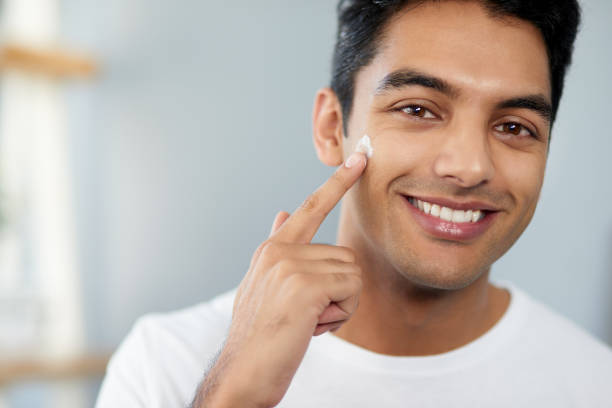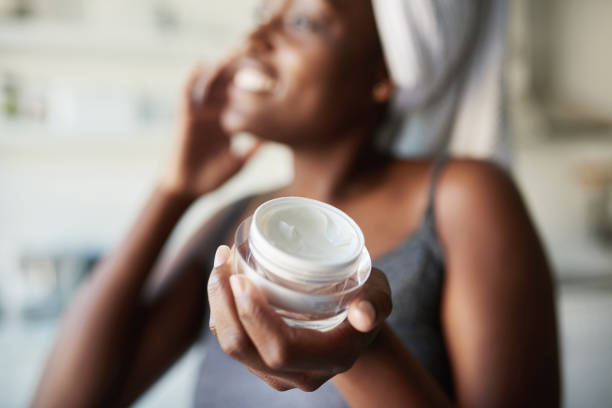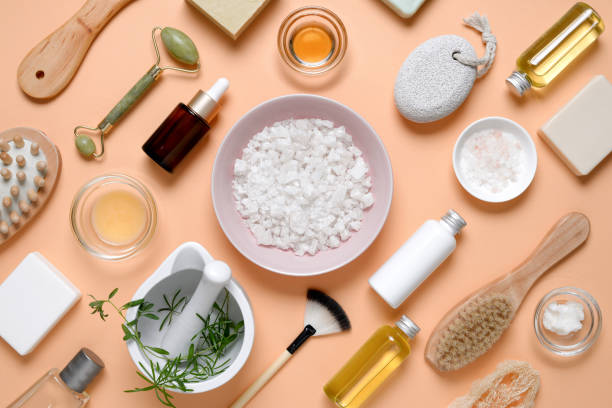In this day and age, most of us are increasingly aware of how important it is to eat organic and as natural as possible. Unfortunately, we often fail to apply this rule to the outside of our body. Our skin is the largest organ in our system; it absorbs toxins and/or nutrients via whatever products we put on it.
The general rule of thumb that applies to food should also apply to our skin care products. If it’s over 3 syllables or you can’t easily pronounce it, it’s not worthy of being on your body!
Many of our rashes and skin problems are often times a result of an allergy or sensitivity to whatever skin care products we’re using. A majority of the products on the markets today contain chemicals and ingredients that are harmful to both our environment and our bodies – all in the name of saving the manufacturer a few dollars.
For instance, mineral oil and petroleum are byproducts of gasoline and are known carcinogens. Despite this, we are advised by professionals to use products that contain these ingredients for the relief of skin irritations on ourselves and even on infants. An infant with minimal or no immune system shouldn’t be covered in a product that could potentially cause cancer. Most of us have less-than-ideal immune systems as adults, so avoiding dangerous ingredients is a good safeguard against disease.
But how do we do that?
Luckily, Mother Nature has provided us with a host of alternatives to these harmful chemicals. There are natural and organic alternatives to be used as ingredients for creams/salves, massage oils, bath salts, hair care, etc. These natural cures are often the starting point for most common medications. For example, white willow bark was an herb used for curing headaches that were eventually replaced with the current ingredients in aspirin.
There’s hardly a product on the market that can’t be made naturally, organically, and made to HEAL us, rather than harm us. Our skin care products are an important part of living holistically, sustainably, and in tune with nature. Plant waxes and nut butters thicken products and allow them to adhere to our skin longer. Unrefined oils provide our skin with essential fatty acids and nutrients. Essential oils also provide nutrients, while also altering our moods.
While there’s a deep gratitude and respect for all technology and scientific advancements offer, it’s time to revert back to the simplicity of Nature in order to achieve balance and wellness. As an example of a simple do-it-yourself product replacement, here’s a recipe for a baby powder I created a few years ago that takes the place of commercial baby powders. This is safe to use on infants.
Freshening Powder
½ cup arrowroot powder
½ cup white clay (also known as Kaolin powder clay)
1/16 cup comfrey root
1/16 cup slippery elm powder
1/16 cup dried lavender leaves
Place comfrey root and lavender leaves in a coffee grinder and process until they are a powder-like consistency. Combine all ingredients in a leftover jar you have around the house, shake well to combine, and cover with a lid. Store this powder in a cabinet away from light and excessive humidity. Shake before using, as many natural products do not contain chemical ingredients to keep everything from separating.
The lavender leaves add healing properties and a light, pleasant scent to the powder. Comfrey is extremely healing for the skin and bones, and slippery elm adds the nice “soft” feeling most common baby or talc powders offer us. In fact, you may notice your hands feel a bit slick when you rinse them, as a result of the slippery elm herb used in this formula.
This recipe makes a little more than 1 cup, which should last 1-2 months.




